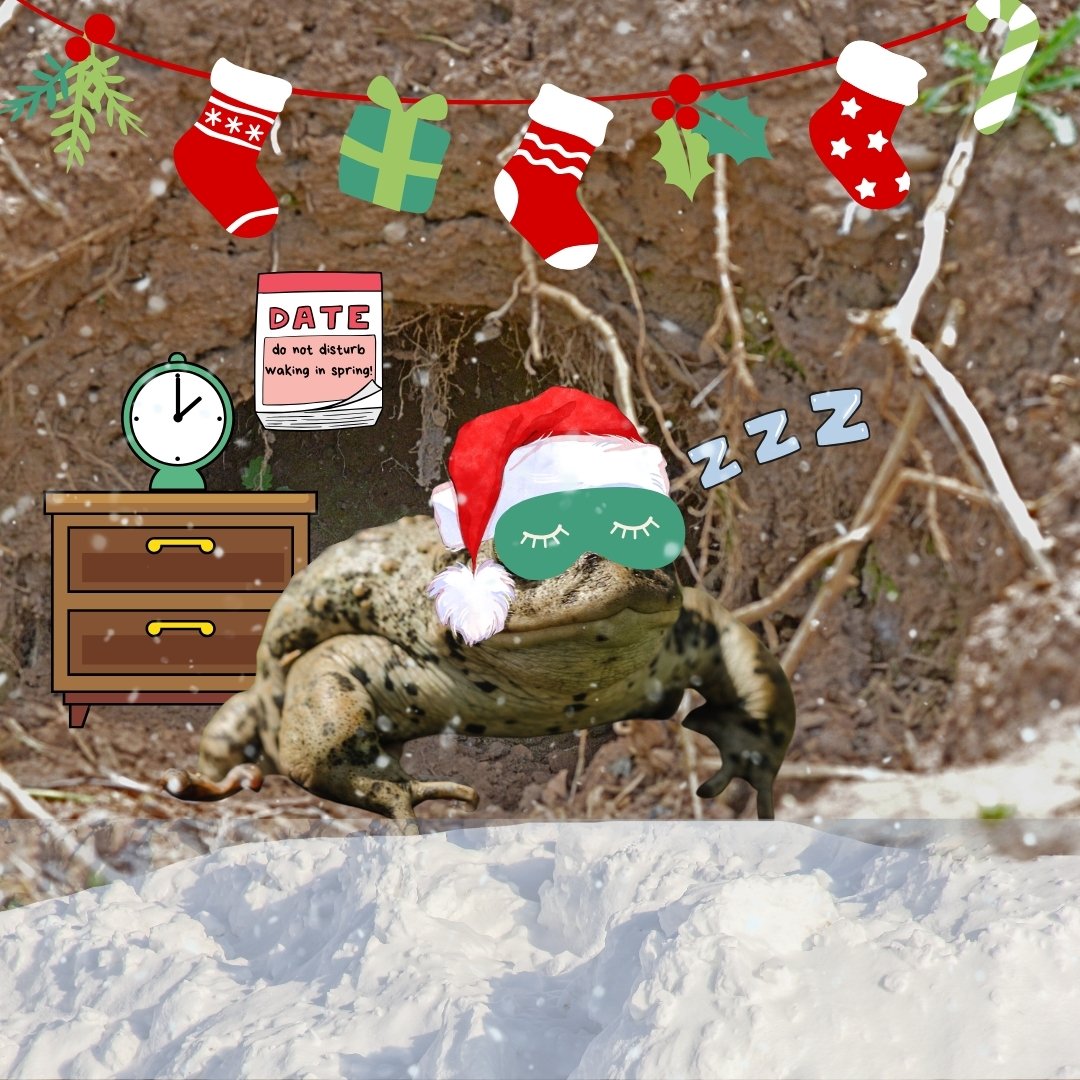Wildlife on Holiday
As we approach the holiday season, the shorter days and cold nights of the winter solstice wrap us in their embrace. We eagerly look forward to spending time with loved ones, cozying up with a warm beverage by a fire, and appreciating the magic of winter.
With this change of pace comes the indoor season of our work. With the seasons’ pollinators logged and our beaver dam analogs left to do their work, our team settles into the planning, data analysis, and coordination that takes place behind the scenes.
But for wildlife, winter doesn’t necessarily mean slowing down and cozying up by the fire. Freezing temperatures, food scarcity, and increased visibility across stark landscapes can leave animals with limited options for survival. What’s a wild one to do?
To survive the winter, wildlife take on a variety of physical and behavioral habits. Whether it’s the snowshoe hare donning their white winter coat or the Uinta ground squirrels spending nine months resting beneath the surface, wildlife generally choose one of three behavioral strategies: adapt, hibernate, or migrate.
Read on to find out how our beloved wildlife are spending their holidays.
Adapt
to change your behavior so that it is easier to live in a particular place or situation
Rosy-Finches
Rosy-finches are stoked to be spending their holidays on a ski-cation at their favorite resort. True snowbirds, these feathered friends were built to spend their lives shredding black-diamonds along high alpine peaks across the West (if you want to find the best skiing, follow the rosies). You won’t find these birds warming up with cocoa in the lodge; rosy-finches embrace harsh winter winds and snow storms that come with the territory.
Beaver
Beaver love spending the holidays with their family, cozying up together in their well-insulated lodge, and enjoying the ample food cache they’ve accumulated throughout the fall. They store their food cache in the ice-covered water and mud that surround their lodge (nature’s refrigerator). Beaver, with their stores of fat and ability to waterproof their fur, are especially adapted for winter conditions.
Hibernate
to spend the winter sleeping or resting
Boreal Toads
In the winter, boreal toads have set their alarms and kindly request that folks ‘Do not Disturb!’ as they take their long winters’ rest. A perfect hibernaculum (place of hibernation) for this cryptic critter is an abandoned rodent burrow or a beaver dam—perhaps a well-made beaver dam analog? Though they’ve been known to emerge from their hibernaculum on a warm winter day, boreal toads will typically stay snuggled until the warm days of spring melt the snow and they begin mating.
Bumble bees
The queen bumble bee goes on a holiday “staycation,” where she spends the fall filling up on late-season flower’s nectar, then digs herself a burrow where she will hibernate throughout the winter. The queen’s survival over the winter is critical, as the rest of the colony dies in late autumn. When moderate temperatures return in the spring, this queen will spend her time foraging and searching for her perfect nest location to begin raising a new colony.
Migrate
of a bird or animal: to move from one area to another at different times of the year
Wilson’s Phalaropes
After filling their bellies and doubling their weight, these small shorebirds will begin their 4,000+ mile journey to their overwintering home: Laguna Mar Chiquita, central Argentina’s large saline lake. Weighing less than a slice of bread, these birds travel thousands of miles each year, to and from their nesting grounds across the northern reach of our hemisphere to their overwintering sites down south.
Monarch Butterfly
As soon as the air begins to crispen with the hint of winter, monarch butterflies reach for their proverbial passports and fly on to warmer weather. Unable to fly below 55 degrees, these iconic butterflies will head to the California coast (western population) or the mountains of central Mexico (central/eastern populations) where they gather in clusters along the trunks and branches of trees to retain warmth.
Thank you for loving wildlife and lands!
We hope that you enjoy your holiday season - whether you’re akin with the beaver family cozying up in their lodge or making like a monarch and booking your ticket to more moderate climates.
Will you support wildlife through all seasons with a year-end gift today?
Are you wishing for a year full of wildlife in 2024?
Be sure to snag a 2024 calendar, featuring gorgeous photos and fun facts about all the wild species we work to protect.
Article and illustrations by Sierra Hastings
Adapt, Hibernate, Migrate definitions from The Britannica Dictionary






